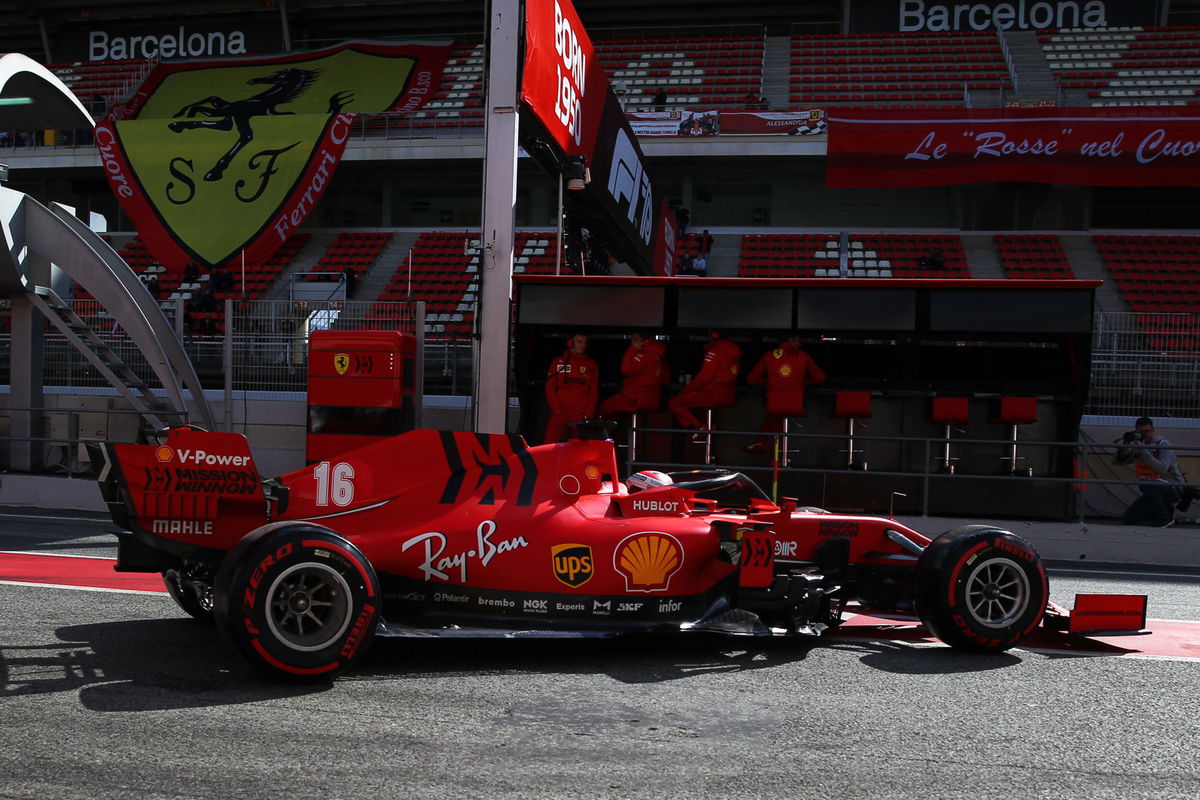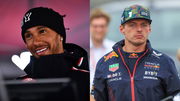
Getty
CIRCUIT DE CATALUNYA, MONTMELO, SPAIN – 2020/02/28: Charles Leclerc of Monaco driving the (16) Scuderia Ferrari SF1000 on track during day six of F1 Winter Testing. (Photo by Marco Canoniero/LightRocket via Getty Images)

Getty
CIRCUIT DE CATALUNYA, MONTMELO, SPAIN – 2020/02/28: Charles Leclerc of Monaco driving the (16) Scuderia Ferrari SF1000 on track during day six of F1 Winter Testing. (Photo by Marco Canoniero/LightRocket via Getty Images)
With Alfa Romeo pulling out of F1. and the team’s rebranding as Stake F1 team Kick Sauber, a lot of attention has been going towards the sponsors. McLaren, for their benefit, has made the headlines with an innovative Chrome partnership, with their logo on the wheels. And who can forget their iconic Gulf Livery during Monaco 2021?
Watch What’s Trending Now!
However, not all sponsor-team stories have been on the up-and-up throughout the years. With Formula 1 being extremely costly to run, and the millions of eyeballs on the sport, there are bound to be some shady actors who enter the sport. From an energy drink company that allegedly had $700 in their bank account, to a Nigerian Prince scam, F1 teams have unfortunately fallen victim in a lot of the cases. Let’s take a deeper look.
ADVERTISEMENT
How do shady sponsors make it into Formula 1?
Formula 1 is an extremely expensive sport. Before the cost cap came into place, successful teams spent somewhere close to half a billion dollars during a single season. However, on the other end of the spectrum, there are teams that barely can afford spares and cover only the basic costs. This basically meant that the teams that could spend the most money often had more success on the field.
ADVERTISEMENT
Despite the cost cap in place, not all teams have the budget to spend as much as the cap. In fact, Alpine spent tens of millions of dollars less than the $135 million limit, hinting that the team couldn’t justify or afford to put more money in.
ADVERTISEMENT
The need for sponsors to bankroll not only the team but sometimes even drivers, has unfortunately always been a part of Formula One. Pay drivers were rampant not too long ago, with teams like Haas hiring drivers like Nikita Mazepin primarily for financial reasons. This has led to some extremely shady sponsorship deals in the past, looking back at which you might be scratching your head, wondering “How did these companies get into Formula 1?”
Top Stories
Who Is Oscar Piastri’s Father, Chris Piastri? Co-Founder of Multibillion Dollar Automotive Company

How Is $1.28 Billion Prize Money Distributed Amongst the David & Goliaths of F1?

What Is ERS in F1? How Does It Differ From DRS?

“Hamilton Is Actually a Contender for Pole”: Shocking Data Lifts Lewis’ Spirits Before Battle With Max Verstappen

Who is Oliver Bearman’s father, David Bearman? – Founder & CEO of Multimillion Dollar Company

Read more: Championship Success Envisioned for “Underdog” Haas as Guenther Steiner Successfully Lures Sponsors
Well, that’s what we are going to deconstruct now. We will take a look at some of the past sponsors in the sport, who have had questionable companies/products that left everyone’s head scratching.
ADVERTISEMENT
Mission Winnow and Ferrari
Philip Morris and Company, the parent company behind the famous Marlboro cigarettes, have enjoyed a long, fruitful relationship with Ferrari. From the 1990s, all the way till 2008, you wouldn’t have been able to see a single Ferrari F1 car without the Marlboro branding. However, after the clampdown on tobacco sponsorships in 2008, the Marlboro logo could no longer appear on the cars. So the company set up a sponsorship of Ferrari through its CSR (Corporate Social Responsibility) company, called Mission Winnow.
While it was claimed that Mission Winnow sponsorship was just about promoting the CSR company, their logo looks almost like the famous Marlboro Chevron logo, allowing for the cigarette company to be indirectly promoted on F1. However, in 2019, many countries began an even stricter clampdown on tobacco promotion, forcing Ferrari to remove even the Mission Winnow logo. They ended their partnership at the end of the 2022 season. However, the parent company, Philip Morris, still appears on the Scuderia Ferrari’s website as one of their sponsors.
ADVERTISEMENT
Arrows’ Nigerian Prince
Back in 1999, team Arrows was struggling to bankroll their F1 season. Due to desperate situations calling for desperate measures, they resorted to partnering with a Nigerian prince, Prince Malik, for the season, in a reported $125 million deal. The money came with a catch. The Arrows team had to promote Malik’s company, T-minus.
What’s the catch with that? Isn’t that the way sponsorships work? Usually, yes. However, in this case, T-minus didn’t even have a product to promote. They had plans to debut the company in F1 and use that branding to sell a wide variety of products. Motorcars, bicycles, and even energy drinks, for that matter, were all planned to be sold.
ADVERTISEMENT
They eventually ended up only manufacturing some energy drinks, but the enterprise wasn’t profitable. By the end of the ’99 season, Prince Malik pulled the vanishing act and disappeared off the grid entirely.
Team Haas and Rich Energy Drinks
Speaking of energy drinks, the story of Haas‘ partnership with Rich Energy Drinks is one of the most famous debacles in the history of the sport. If you’ve watched Drive to Survive, you pretty much know what the story is here.
ADVERTISEMENT
2 years since I fired @HaasF1Team for poor performance both on & off the track. Rich Energy have unfinished business in F1 & I’m looking forward to our return in 2022. Good luck to all teams & drivers this weekend #RichEnergy #Haas #F1 #BritishGP #Silverstone #SprintRace https://t.co/BMo02uSchu
— William Storey (@richenergyceo) July 17, 2021
TLDR; Rich Energy, founded in 2015 by William Storey and an “anonymous Austrian scientist,” claimed to produce a “premium British energy drink” but faced availability issues. Storey’s background includes RAF service, QPR reserves football, professional gambling, and tobacco farming in Zimbabwe.
Despite sponsoring various entities, the brand’s legitimacy is questionable. In 2018, they became the Haas F1 team’s title sponsor, but abruptly ended the deal in 2019, citing poor performance and F1 politics. In the middle of this whole saga, a report arose, alleging that Rich Energy had as little as $700 in their bank accounts. This also meant that Haas didn’t see much of the money that they were getting from the title sponsorship spot to the energy drinks company. Yeah. That hurts. William Storey later announced he would be back in Formula 1.
ADVERTISEMENT
Watch this Story: List of all the Russian Drivers in Formula One History
There are a lot more examples that we can go into detail here. For instance, the Mercedes team being sponsored by the fallen crypto giant FTX deserves its own article. We’ve gone through three of the famous examples of bad sponsorships in this article, but if you want to learn more, let us know, and we’ll be happy to give you additional instances.
ADVERTISEMENT
ADVERTISEMENT
ADVERTISEMENT

